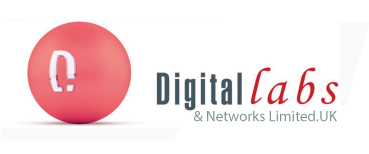Top 7 Free Tools for Vulnerability Assessment and Penetration Testing (Updated 2025)
In today’s digital landscape, cybersecurity is more critical than ever. With cyber threats evolving rapidly, businesses and individuals alike need advanced tools to identify vulnerabilities and secure their systems.
According to recent reports, the global cost of cybercrime is projected to reach $10.5 trillion by 2025, with 73% of successful breaches in 2024 attributed to vulnerable web applications. Regular testing is no longer optional—it’s a necessity.
Fortunately, you don’t need a big budget to strengthen your defenses. There are powerful, free tools available that can help you perform vulnerability assessments and penetration tests effectively. In this article, we’ll explore the top 7 free tools for VA and penetration testing in 2025, highlighting their features, use cases, and why cybersecurity professionals trust them. Whether you’re a small business owner, an IT professional, or an ethical hacker, these tools will empower you to stay ahead of cyber threats.
Why Vulnerability Assessment and Penetration Testing Matter
Before diving into the tools, let’s clarify what VA and penetration testing involve:
- Vulnerability Assessment (VA): This process involves scanning systems, networks, or applications to identify known vulnerabilities, misconfigurations, or outdated software. It’s like a health checkup for your digital infrastructure.
- Penetration Testing: This goes a step further by simulating real-world cyberattacks to exploit vulnerabilities, testing how well your defenses hold up against an actual hacker.
Together, these practices, often referred to as VAPT (Vulnerability Assessment and Penetration Testing) help organizations identify and fix security gaps. With nearly 50% of data breaches in 2024 involving personally identifiable information (PII) and 92% of organizations reporting breaches due to in-house app vulnerabilities, proactive testing is critical.

Top 7 Free Tools for VA and Penetration Testing in 2025
Here’s our curated list of the top 7 free tools that stand out for their effectiveness, ease of use, and community support. These tools are widely used by cybersecurity professionals and are updated to tackle modern threats like AI-powered attacks and IoT vulnerabilities.
1. Metasploit Framework
What is it?
Metasploit is the gold standard for penetration testing. This open-source framework offers a vast library of exploits, payloads, and auxiliary modules, making it ideal for testing vulnerabilities across networks, servers, and applications.
Key Features:
- Over 1,600 exploits for platforms like Windows, Linux, Android, and more.
- Modular architecture for customizing tests.
- Meterpreter for post-exploitation tasks like lateral movement.
- Integration with tools like Nmap and Nessus.
Why Use It?
Metasploit’s extensive exploit database and active community make it perfect for beginners and advanced pentesters alike. It’s beneficial for simulating real-world attacks to validate vulnerabilities.
Best For: Ethical hackers, red teams, and security professionals testing complex environments.
Download: Metasploit Framework
2. OWASP ZAP (Zed Attack Proxy)
What is it?
OWASP ZAP is a free, open-source tool designed for web application security testing. It’s a go-to for identifying vulnerabilities like SQL injection and cross-site scripting (XSS).
Key Features:
- Automated and manual scanning for web vulnerabilities.
- Intercepting proxy to analyze HTTP traffic.
- Support for OWASP Top 10 vulnerabilities.
- Active community and plugin ecosystem.
Why Use It?
ZAP is beginner-friendly yet powerful enough for advanced users. Its ability to perform both automated and manual scans makes it versatile for testing web apps in development or production.
Best For: Developers, security testers, and organizations focusing on web application security.
Download: OWASP ZAP
3. Nmap (Network Mapper)

What is it?
Nmap is a powerful network scanning tool used for discovering hosts, services, and open ports. It’s a staple in any pentester’s toolkit for mapping network attack surfaces.
Key Features:
- Port scanning and service detection.
- Operating system and version fingerprinting.
- Scripting engine (NSE) for advanced vulnerability scanning.
- Support for IoT and cloud environments in 2025 updates.
Why Use It?
Nmap’s versatility and detailed reporting make it ideal for reconnaissance and vulnerability scanning. Its scripting engine allows customization for specific needs.
Best For: Network administrators and pentesters performing reconnaissance and network audits.
Download: Nmap
4. Wireshark
What is it?
Wireshark is a network protocol analyzer that captures and inspects data packets in real-time, providing deep insights into network traffic.
Key Features:
- Detailed packet analysis and filtering.
- Support for thousands of protocols.
- Visualizations for network troubleshooting.
- Open-source and cross-platform (Windows, macOS, Linux).
Why Use It?
Wireshark excels at identifying network vulnerabilities, such as unencrypted data or suspicious traffic. It’s essential for diagnosing security issues in complex networks.
Best For: Security analysts and network engineers analyzing traffic for vulnerabilities.
Download: Wireshark
5. OpenVAS
What is it?
OpenVAS (Open Vulnerability Assessment Scanner) is a comprehensive, open-source tool for scanning systems and networks for known vulnerabilities.
Key Features:
- Regularly updated vulnerability database.
- Authenticated and unauthenticated scans.
- Detailed reports with remediation recommendations.
- Integration with SIEM systems.

Why Use It?
OpenVAS is a free alternative to commercial scanners like Nessus, offering enterprise-grade features. It’s ideal for organizations needing continuous vulnerability assessments.
Best For: Enterprises and IT teams conducting regular security audits.
Download: OpenVAS
6. Burp Suite Community Edition
What is it?
Burp Suite Community Edition is a free version of the popular web vulnerability scanner, widely used for manual penetration testing of web applications.
Key Features:
- Intercepting proxy for analyzing web traffic.
- Tools for manual testing (Repeater, Intruder, Decoder).
- Support for OWASP Top 10 vulnerabilities.
- Extensible with community plugins.
Why Use It?
Burp Suite’s manual testing capabilities make it a favorite among pentesters who need precise control over their scans. It’s perfect for digging into complex web vulnerabilities.
Best For: Advanced pentesters and security researchers focusing on web apps.
Download: Burp Suite Community
7. Nikto
What is it?
Nikto is an open-source web server scanner that identifies risky files, outdated software, and other vulnerabilities in web servers.
Key Features:
- Scans for over 6,700 potentially dangerous files and programs.
- Checks for outdated server software.
- Supports SSL and proxy configurations.
- Generates detailed reports for remediation.
Why Use It?
Nikto is lightweight and easy to use, making it ideal for quick scans of web servers. It’s a great starting point for identifying low-hanging fruit in web security.
Best For: Beginners and security teams performing quick web server assessments.
Download: Nikto
Comparison Table: Top 7 Free Tools for VA and Penetration Testing
| Tool | Primary Use | Key Strength | Best For | Platform Support |
| Metasploit | Exploitation Framework | Extensive exploit database | Ethical hackers, red teams | Windows, macOS, Linux |
| OWASP ZAP | Web Application Scanning | Automated and manual web testing | Developers, web security testers | Windows, macOS, Linux |
| Nmap | Network Scanning | Versatile reconnaissance and scripting | Network admins, pentesters | Windows, macOS, Linux |
| Wireshark | Network Protocol Analysis | Deep packet inspection | Network engineers, analysts | Windows, macOS, Linux |
| OpenVAS | Vulnerability Scanning | Comprehensive enterprise-grade scans | Enterprises, IT teams | Linux (primarily) |
| Burp Suite Community | Web Vulnerability Testing | Manual testing with intercepting proxy | Advanced pentesters, researchers | Windows, macOS, Linux |
| Nikto | Web Server Scanning | Quick scans for server vulnerabilities | Beginners, web security teams | Windows, macOS, Linux |

How to Choose the Right Tool for Your Needs
With so many tools available, selecting the right one depends on your specific requirements. Here are some tips to guide your decision:
- Define Your Scope: Are you testing a web application, network, or server? Tools like OWASP ZAP and Burp Suite are best for web apps, while Nmap and OpenVAS excel at network scanning.
- Consider Your Expertise: Beginners may prefer user-friendly tools like Nikto or OWASP ZAP, while advanced users can leverage Metasploit or Burp Suite for deeper testing.
- Check Platform Compatibility: Ensure the tool runs on your operating system. Most tools support Windows, macOS, and Linux, but OpenVAS is primarily Linux-based.
- Look for Community Support: Tools with active communities (e.g., Metasploit, OWASP ZAP) offer regular updates and resources, ensuring they stay relevant against new threats.
- Compliance Needs: If you’re in a regulated industry (e.g., healthcare or finance), choose tools like OpenVAS that support compliance reporting for standards like PCI DSS or HIPAA.
Conclusion
Cybersecurity threats are evolving, but you don’t need to spend a fortune to protect your systems. The top 7 free tools for vulnerability assessment and penetration testing in 2025 Metasploit, OWASP ZAP, Nmap, Wireshark, OpenVAS, Burp Suite Community, and Nikto—offer powerful capabilities to secure your digital assets. By leveraging these tools, you can identify vulnerabilities, simulate attacks, and strengthen your defenses without breaking the bank.
Start with the tool that best fits your needs, whether it’s scanning web apps, networks, or servers. Regular testing, combined with a proactive approach, will keep you one step ahead of cybercriminals. Stay secure, stay vigilant, and make 2025 the year your organization takes cybersecurity to the next level!
Ready to get started? Download one of these tools today and take control of your cybersecurity journey.








